How to Plant a Meme
Posted by <Joshua Citarella> on 2022-04-11
In late 2018, I began a secret 18 month long project to infiltrate and positively influence radical online Gen Z communities. After publishing Politigram and the Post-left, I spoke with many of the users profiled. Through these conversations, I realized that little (if any) positive messaging would be able to penetrate unless that signal came from inside their trusted communities. So I started several anonymous meme accounts across various social media platforms. I will do my best to tell this story in a way that does not identify anyone.

When I speak with radical young people, I always try to affirm their political anxieties but redirect their interests and activities toward more productive ends. The group profiled in Politigram & the Post-left was a uniquely at-risk demographic that had fallen through the cracks of conventional counter-messaging. An essential part of today’s info-echo chambers is building up resistance to counter-narratives. These teens had embraced an extreme form of pessimism verging on self-destruction. In the case of climate change, their concerns are not totally unwarranted but radical ideas like eco-extremism and anti-natalism are not politically helpful.
The goal of this project was to plant a progressive and politically rehabilitative idea within these at-risk communities. My hope was that they would embrace this new way of thinking and ultimately amplify that message on their own. It worked.
The Reference Chain
The strategy was to plant a series of connected references that nudge and guide their interests over time. You are entering through the bottom of the funnel to build a pipeline out. This process will require new links, nodes and stepping stones that join to form a reference chain. It may take two weeks to familiarize the community with one reference, the next might take days, while others could take months. Each successive link should build on the ideas of the last. Each link must feel causal and intuitive. Adjacent ideas should interact and reinforce one another, but when taken as a whole, the starting and end points may be radically different. Over the course of several months, I would attempt to guide their interests from Ted Kazcynski, to Nick Land, to Gilles Deleuze, to the CCRU, to Sadie Plant and finally to Mark Fisher. At the end of this project I hoped that some of them might become interested in conventional forms of political organization or possibly even engage in electoral politics. Perhaps that last part was a bit too ambitious lol.

Nudging users to take political action or to become members of a specific organization is likely beyond the scope of this project. Memetic influence is about shaping politi-fandoms: online subcultures of tacit support. These communities form the reserves from which a portion will later become politically activated. Targeted influence can help to shape more positive communities that yield better ends.
Memeing Mark Fisher
I started a discord in May of 2020. Soon, various users began to share the same Mark Fisher memes that I had quietly made over a year ago. For a while, I wondered what (or if) to say anything about it. When I first discussed this project, I worried that telling the story might counteract or undo its remediative influence. Instead, it has helped to build a lore and mythology that now imbues these images with a special power-- the artist’s work is simultaneously everywhere and nowhere. Capitalist Realism is the meta-meme. While other titles appear like symptoms, Capitalist Realism diagnoses our political condition and charts a path out.
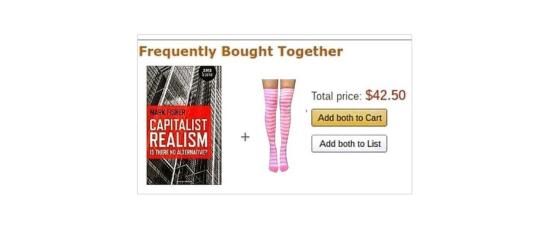
This was the first Capitalist Realism meme. (Maybe ever?) Despite the book’s offline popularity, it had no presence within online memetic subcultures. Sometimes the necessary work is just introducing the right information to the right audience. Soon, it began to show up in various overlapping communities. The meme started to spread on both the young online left and right.
Reach ≠ Influence
When I talk with activist groups, they always seem to want to go viral. They say things like: “tell us the recipe for a new popular wojak!” It’s important to clarify that: reach ≠ influence. Effective messaging is about slowly acculturating an audience to new ideas over time. There is no instant gratification for political influence. Fringe ideas are often rejected when broadcast at scale.
Disclaimer: As with any memetic tactic, there is always a hazard that by sharing these tools you risk arming your political opponents. But experienced memers already know these strategies. Everything I say here, I learned from watching others do it. In the past few years, I’ve seen many online communities become infiltrated and influenced for the worse. This essay is an attempt to re-present these tactics and make them available to all actors.
Phase 1: Act Natural
During this phase you will post ambiguous edgy content. These memes, links, images and tweets should contain references that are recognizable to the target audience but do not express any clear position. You’re going to do this for three months.
At this phase you are demonstrating familiarity with the community codes and canon so that you can later gain entry to these groups. The goal of phase 1 is to build a portfolio of content so you look like a normal account. This will allow you to have your ‘follow’ and ‘join’ requests accepted. If you look like an outsider you're not going to be allowed in.
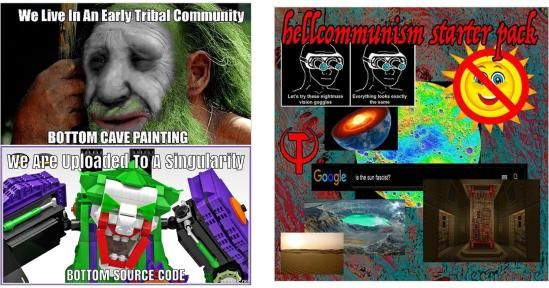
You should post consistently and maintain a daily content schedule. Maybe you can get away with every other day. But honestly, if you’re not already participating in these spaces during your free time then you’re not going to make it. To accomplish anything meaningful, you need to be fully immersed. You must be a part of these communities. The time investment is enormous.
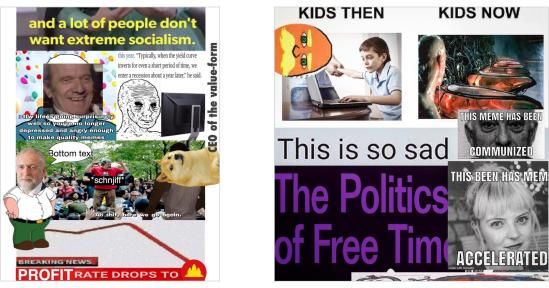
Gaining entry to private groups is key. Social media was sanitized years ago. Radical discussions no longer take place in publicly visible spaces. Instead, private groups, DMs and chat servers have become the molten core from which all radical takes now erupt. What you see on the public timeline today was workshopped in the private chat yesterday. Phase 1 is about getting a pass into someone else's echo chamber.
Phase 2: Navigation
It's time to narrow your focus onto a targeted handful of pages. Lighthouse accounts are highly active & influential users who help to shape community opinion. Repost their content and signal boost their takes. Embed yourself as another node within their discursive network. Do this for three months.
Lighthouse accounts will post frequently, express uncompromising positions and often organize community activities. They may run a chat server or even lead a guild. Over time, these users accumulate an ultra-dedicated community with high degrees of trust. Followers will come to them with questions and look to them before staking a position in debate. At critical points, these ideological trendsetters will give an early signal about a change in alignment. This will soon ripple out to the community at large.
Now, you will stop posting scattershot references and stake out an explicit position. Align yourself with the lighthouse(s) you wish to influence. Amplify their voice by reposting similar content. Don’t just retweet them 5 minutes after. Instead, try to prepare tomorrow’s post ahead of time. Add a small flourish to make it your own. Influencers want quality followers, not just retweet bots. It helps if you can add something small and relevant to the conversation

During this phase you’re going to be amplifying ideas that may seem contrary to your end goals. Depending on the targeted group, these topics may range from mildly objectionable to utterly reprehensible. If you have an ethical hang up about posting X, Y or Z —- you’re not going to make it in this business. For this phase, you really have to be enlisted in their movement. You have to understand how they think (and interact) in a way that can only be known from inside the community. This is the only way to gain their trust. If you don't have their trust, you’re never going to be able to influence them.

Radical online spaces are structured like a Russian doll; increasingly dense and exclusive circles that can’t be seen from the outside. In this new map of social media, you don’t need followers. (In fact, they’re a liability! more follows = more reports) The meta-game is now to influence the influencers. You want to remain small so that you don’t become a source of competition. Phase 2 is about building name recognition with lighthouse accounts
Phase 3: Attunement
After consistently participating in these communities for a period of six to nine months, you will (in most cases) be given an invite; admin privileges to a joint meme account, a discord link, added to a subgroup or perhaps even a private chat. Across different communities and platforms this necessary period of building trust may vary.
These private spaces are where radical ideas are *really* shaped. Users will casually throw around exaggerated opinions to gauge their peers' reactions. This form of pseudo-ironic banter is a way to calibrate individual and collective positions. It helps to build a sense of shared reality and establish an overarching narrative frame. This can only happen within high-trust groups that have proven themselves over time.
Once you're inside the group, you should participate as little as possible. Seriously. Do not get involved in the daily drama between users. Conversations in the deep DM will range from politics to personal, news-cycle to home life, work life to school. The DM can quickly swap from revolutionary vanguard to group therapy session. You don’t want to be caught on the wrong side of it. Avoid ethical entanglements when possible. Do not insert yourself into other people's lives.
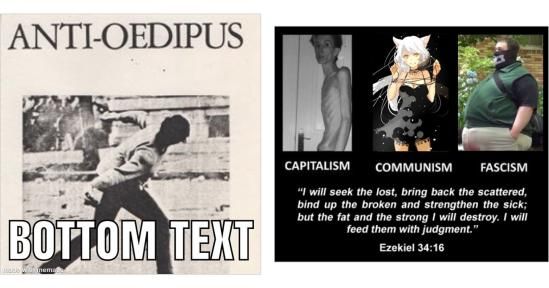
At this point, you just need to be a trustworthy and recognizable name within the inner circle. Resist the urge to debate people in the chat. It sounds tempting but it's not going to help you. Remember: there is no way that you, as an infiltrator, can spend more time in this world than the people who built it. Online subcultures are extensively coded. Overeager participation will expose you as an outsider. This phase it's about getting deep access.
Phase 4: The Hobby Enemy
Your first major deviation from the familiar memeplex will be to posit an ironic enemy. This new figure will now become your personal hobby horse and serve as a repetitive in-joke for the community. Shitposting is now your mission and personal brand. For this phase you will become the class clown. Community members will chuckle and *eye roll* : “@technopessimism is Yangposting again lol”.
In tone, you should take this hobby-enemy overly seriously and push it past the point of satire. But, in an edgy and ironic way, you might even join that side… haha, unless? This hobbyenemy should be thematically related but not a serious threat or opposition. Do not choose anything that would make you appear to be a real dissenter. This is just a humorous diversion.
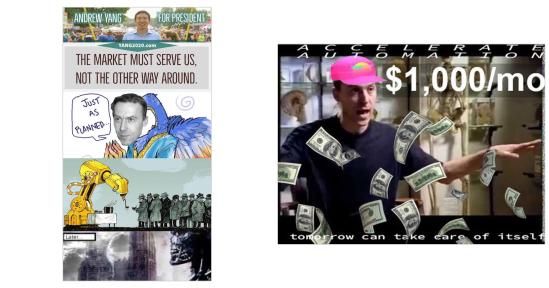
It's important to establish the hobby-enemy early on. You should make jokes about it, far past the point where it becomes annoying, because you’re going to use these same techniques later to “ironically” entertain the topics you actually want to steer this community towards. Right now, you are establishing yourself as a shitposter and a satirist, so that your real suggestions will be permitted in the future.
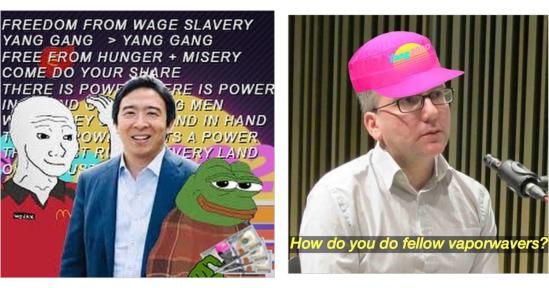
Phase 5: Link and Build
At this point, you have embedded yourself in the culture and demonstrated a deep knowledge of its codes. You have also established a recognizable presence that allows you to post everything from radical, to humorous and serious content. Now, you will patiently and deliberately build your reference chain towards an entirely new way of thinking. Remember: irony and suggestion are powerful forms of influence.
[Fortnite] Advanced Strategy & Tactics
1. Faux reposts
Create the appearance that you are reposting someone else’s original content. Your images should contain artifacts to appear as if they are already in circulation elsewhere. They can even include the edges of the UI so they seem like a screenshot of someone else’s post. Crop tightly and poorly. To the outside observer, you are merely boosting an existing signal but not its source.
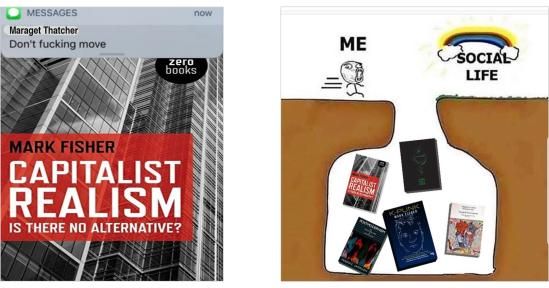
Pro tip: a good meme is not your personal artwork in your own signature style. Influence comes from anonymity. A recognizable style increases the likelihood that posts will be traced back to you (a lone individual) instead of embodying a collective sentiment that freely floats in the zeitgeist. Don't use custom fonts and gradients. Instead, use the twitter top text. Riff on every trending format that bubbles up organically. You don't have to search very far-- just pull from images posted by the community members themselves.
2. Four panels
Many popular meme formats consist of four panels or characters. This is an ideal opportunity to introduce new references. Latch on to the success of a trending four panel image and use this format to plug in; two well-known references, one somewhat familiar reference and one new reference that is yet unknown.
Memes like this, create the context that these topics (or authors) are in some way meaningfully associated with one another. It is a way to incrementally expand the community memeplex by building on existing knowledge. Despite their resolute convictions on the timeline, it's important to keep in mind that many politi-fandoms have not actually done the reading. Creating this type of context can go a long way.
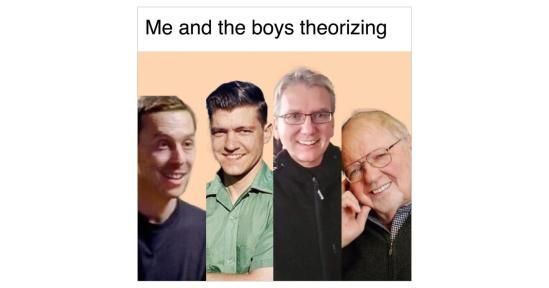
When someone hops in the comments to ask; “who is that fourth character in the image?” Do not be alarmed! You’re not going to be made. Rather, this is often the best case scenario. When it comes to sharing knowledge, online communities have their own reputational currency and incentives. Wait patiently for someone else to respond and give them the answer. Now, you've gotten the community to introduce this new information to themselves. At this point, you're not even really planting an idea, you're nurturing an existing one.
If some new reference fails or is not well received, default to irony. Everything is always a joke. Lay low for a while and try again later.
3. Book Covers
Dropping images onto book covers is already a common format. It works to refine the nascent political sentiments that emerge through memes and points the audience towards further clarification. These images tend to get a lot of Likes because people mostly want to look at memes– but they also enjoy feeling smart when they recognize the title. You can afford to be sloppy with the pairings. It basically always works.
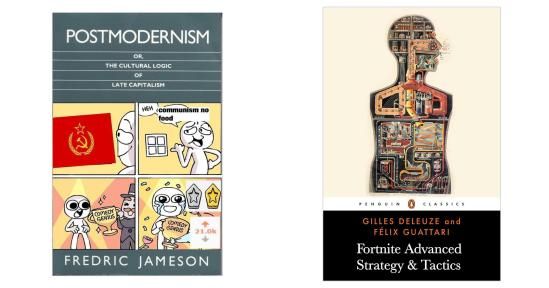
4. Link Peppering
Supplement your regular content by infrequently dropping links. Do this sparingly if you want your posts to be meaningful. Don’t shill.
“Book drops” are common on platforms like Discord and Telegram. Users will post a bunch of related PDF’s all at once. It's too much for anyone to read in one sitting– rather, it's a way of backing up & distributing the community library. Drops generally consist of ~five or six PDFs. You can easily grab four familiar references (sourced from previous drops by other community members) and mix in a few hand picked references of your own. Ideally, one of these texts should be the most recent link in the reference chain. It should be delivered to an audience that has already been primed by your memes and content. People often repost and pass these along before reading. Once a new text is introduced, it tends to stick around.
Similarly, you can post a flurry of video lectures and other content. This list should include links previously sent by other members along with a few of your own. People really do save these and watch them later. The key to everything is patience and repetition. Keep posting.
Conclusion
After about a year and a half of doing this, I reached the end of my project. You can nudge someone from anprim up to Mark Fisher but you can’t make them vote for Bernie Sanders. All influence has its limits.
I’ve tried to describe this project in terms broad enough to apply elsewhere but I think these targeted interventions will always (in some way) be case specific. Most of the images contained here were made by me. Some are by anonymous or unknown authors. I’ve chosen to withhold certain details to prevent my old accounts from being identified too easily. In preparation for publishing this text, I’ve gone back and disabled as many of those accounts as possible.

Not coincidentally, this essay is also the origin story of how I ended up here. Upon concluding the meme project, I decided to become a content creator. At the time, I felt that I had reached the limit of working in small meme communities (influencing from the bottom-up) and I wanted to produce content that would spread those ideas further (influencing from the top-down). One week after I stopped posting memes, I recorded my first podcast episode.
Artists learn by doing. To truly understand how meme communities operate, you have to become a part of them. While others may design & theorize from afar, artists must take a hands-on approach. We make concrete answers to abstract problems. The work is time consuming and often yields few results, but it can also generate incredibly rare and novel insights that could not be derived anywhere else.